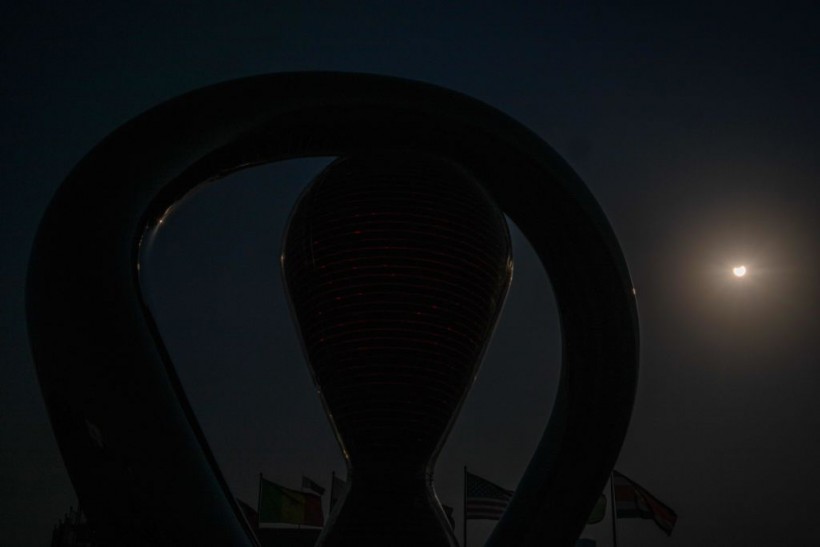
(Photo : Jewel SAMAD / AFP) (JEWEL SAMAD/AFP via Getty Images)
A ring of fire solar eclipse is expected to be visible to people in several parts of the world on Oct. 14, as many onlookers are eagerly wanting to view the dazzling celestial event.
A "ring of fire" solar eclipse will be visible in the skies over North, Central, and South America on Oct. 14, which is a rare opportunity that scientists will be looking out for.
The singular spectacle is considered a dazzling celestial event that will allow millions of people to witness it. Peg Luce, the acting director of the Heliophysics Division at NASA headquarters, said that it would give the "awe and the wonder of seeing a beautiful ring of fire eclipse."
Ring of Fire Solar Eclipse
The nickname of the solar eclipse, ring of fire, comes from the appearance of annular solar eclipses, which are similar to total solar eclipses, except that the moon is at the farthest point in its orbit from our planet, which means that it cannot completely block the sun.
This type of eclipse would instead allow the sun's fiery light to surround the moon's shadow in order to create the so-called ring of fire. The yearly solar eclipse is expected to start in the United States at around 9:13 a.m. PT and will pass from the Oregon coast to Texas' Gulf Coast, as per CNN.
The event would be visible in Oregon, Nevada, Utah, New Mexico, and Texas and the lunar shadow will also be visible to people in parts of California, Idaho, Colorado, and Arizona. Scientists said that the eclipse will end in the US at around 12:03 p.m. CT.
After the celestial event leaves the United States, the eclipse will cross Mexico, Belize, Honduras, Panama, and Colombia before ending off South America's Atlantic coast at Natal, Brazil.
If the weather permits, a crescent-shaped partial solar eclipse, which is where only a part of the sun is covered by the moon, will become visible on Oct. 14, in all 49 continental U.S. states. People can use NASA's interactive eclipse map to check when the eclipse will pass over their area so that they can prepare for a viewing.
Read Also: Super Full Harvest Moon: Here's How and Where You Can Watch the Last Supermoon of 2023
Watching the Celestial Event
Those who are looking to view the celestial event are encouraged to look for a clear, unobstructed view of the sun, as it is the ideal situation. However, even under overcast conditions, the annular eclipse will have a noticeable effect and cast an unusual dimness during the daytime, according to Gizmodo.
Additionally, observers may see the day to be less bright than normal even if clouds obscure a direct view. But for the people who may otherwise not be able to see the eclipse in person, NASA is planning to run a live broadcast of the celestial event.
While the moon will be passing in front of the sun, it is still not safe to directly look into our solar system's star. Even just a sliver of the sun peeking out from behind the moon is strong enough to potentially permanently scorch a person's retinas.
NASA recommended wearing specialized eye protection when viewing the ring of fire solar eclipse. Experts warned that looking at the sun through binoculars, a camera lens, or a telescope without using a special-purpose solar filter can instantly cause severe eye injury, said CBS News.
Related Article: Scientists Studying Antimatter Have Made a Key Discovery That it is Also Affected by Gravity








